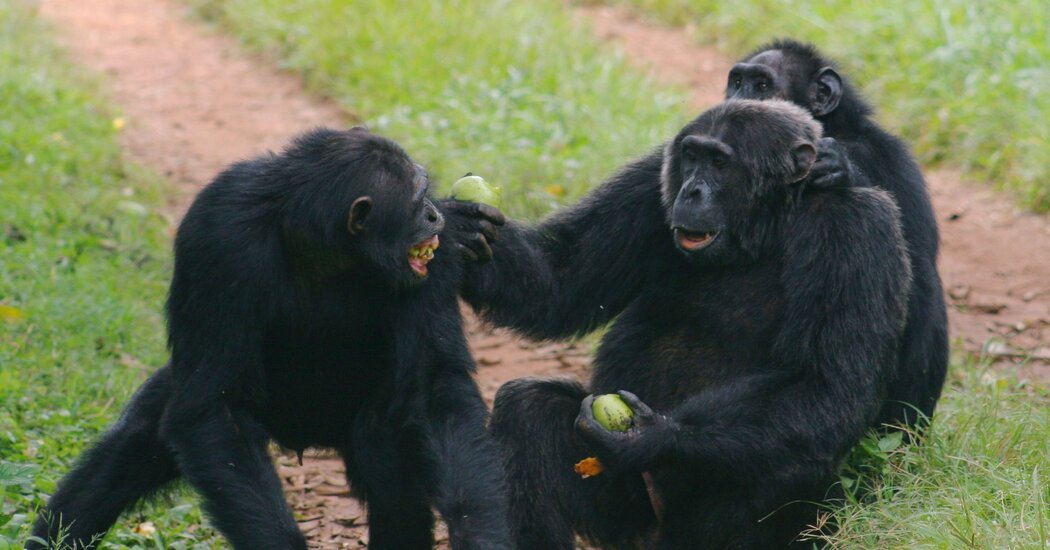Chimps and other apes have been observed making more than 80 meaningful gestures. Three theories have tried to explain why.
In the 1960s, Jane Goodall started spending weeks at a time in Gombe Stream National Park in Tanzania watching chimpanzees. One of her most important discoveries was that the apes regularly made gestures to one another. Male chimpanzees tipped their heads up as a threat, for example, while mothers motioned to their young to climb on their backs for a ride.
Generations of primatologists have followed up on Dr. Goodall’s work, discovering over 80 meaningful gestures made by not only chimpanzees, but also bonobos, gorillas and orangutans.
Now researchers are using these gestures to peer into the minds of apes. Some even think they offer clues about how our own species evolved full-blown language. “Certainly, gestures played a big role,” said Richard Moore, a philosopher of language at the University of Warwick.
In the 1980s, Michael Tomasello, then a young comparative psychologist, pioneered the first theory about ape gestures based on observations of infant chimpanzees in captivity as they grew into adults.
He noticed that the baby apes made gestures to their mothers and, as they matured, developed new gestures directed at other chimpanzees.
Based on his observations, Dr. Tomasello argued that gestures develop among apes as simple habits. If a baby repeatedly tries to grab food from its mother’s mouth, for example, the mother may eventually start to give it food while the baby is still stretching out its arm. The baby, in turn, may stop bothering with the full action.
